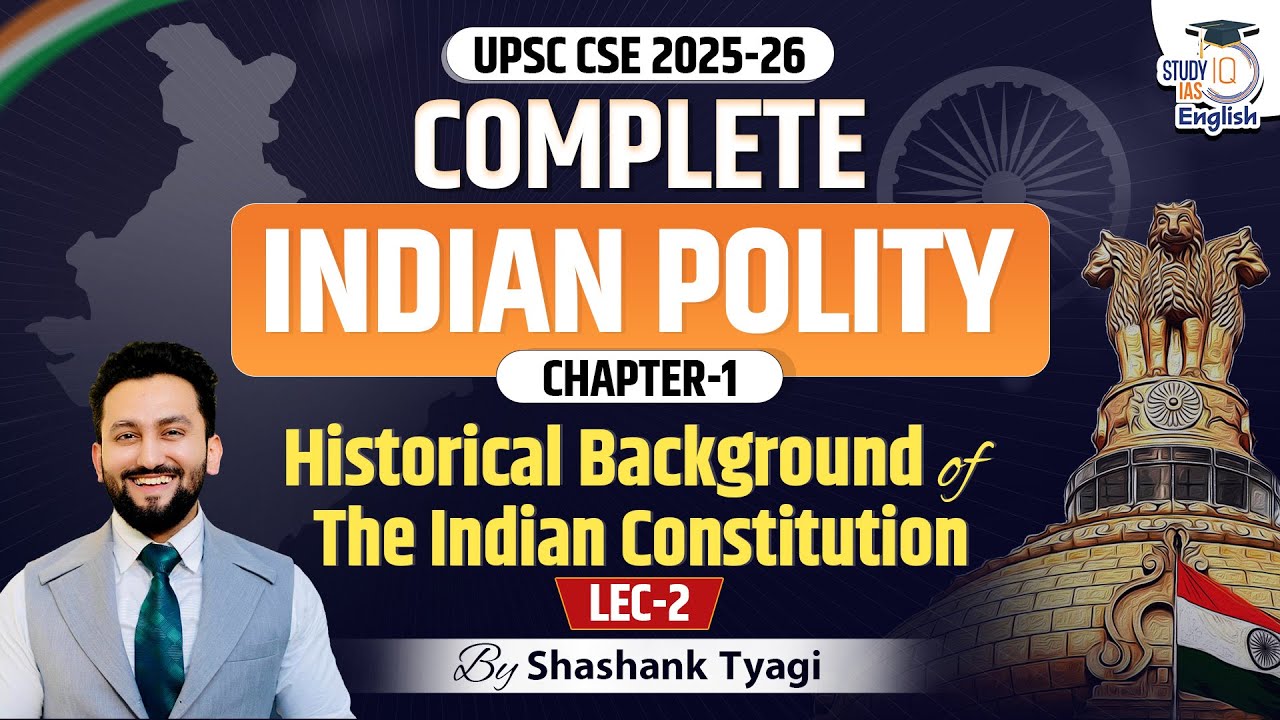The Making of India's Constitution
Summary
TLDRThe script narrates India's struggle for independence and the formation of its democratic republic. It traces the journey from the Swaraj Bill in 1895 to the declaration of Poorna Swaraj in 1930, leading to the drafting of the constitution by a Constituent Assembly from 1946 to 1949. The document aimed to transition India from a colonial state to a democratic one, promoting equality, secularism, and economic reform. The constitution was adopted on January 26, 1950, marking the birth of the Indian Republic, which now calls for defenders to uphold its progressive ideals.
Takeaways
- 📜 The Indian independence movement was a prolonged struggle against British colonial rule, fought in various arenas including streets, courts, and assemblies.
- 📅 The early call for Indian self-governance was voiced in 1895 with the Swaraj Bill, which demanded a dominion state with equality for all and freedom of speech.
- 🗣️ In 1928, the Motilal Nehru Report pushed further, demanding self-governance and minority rights, but these demands were ignored by the British.
- 🇮🇳 On January 26, 1930, the Indian National Congress declared 'Poorna Swaraj' or complete independence, rejecting the earlier demand for dominion status.
- 🏛️ At its Karachi session in 1931, the INC demanded comprehensive social and economic rights for all citizens.
- 📝 Sensing change, M.N. Roy proposed a constitution drafted by a constituent assembly comprised of Indians, which the INC eventually supported.
- 👥 The Constituent Assembly, formed in 1946, consisted of nearly 300 members representing diverse political opinions, religions, and ethnicities, who worked for three years to draft India's Constitution.
- 🏛️ The Assembly made deliberate and radical constitutional choices to transition India from a colonial state to a constitutional democratic republic, ensuring adult franchise and independent courts.
- 🗽 The Constitution aimed to transform Indian society from one based on caste hierarchy and patriarchy to a modern, egalitarian society founded on individual dignity and fraternity.
- ⚖️ It also sought to create a secular democracy by guaranteeing freedom of religion and separating the state from organized religion.
- 🌾 The Constitution aimed to restructure the feudal economy by redistributing land and ensuring social and economic welfare.
- 🎉 The new constitutional republic of India was officially born on January 26, 1950, with a call to its citizens to defend and uphold its progressive values.
Q & A
What was the primary objective of the Indian people in the late 19th and early 20th century?
-The primary objective was to achieve freedom from British colonial rule and establish a dominion state with equality and freedom of speech.
What was the Swaraj Bill of 1895 about?
-The Swaraj Bill of 1895 demanded a dominion state with equality for all and freedom of speech, reflecting the early voice of India's desire for self-governance.
What did Mutilal Heroes' report in 1928 call for, and how did it differ from the Swaraj Bill?
-Mutilal Heroes' report in 1928 called for self-governance and minority rights, going further than the Swaraj Bill by emphasizing the need for minority rights in addition to self-governance.
Why did the Indian National Congress (INC) declare Poorna Swaraj in 1930?
-The INC declared Poorna Swaraj, or complete independence, in 1930 because the British ignored the demands for a dominion state with equality and freedom of speech.
What significant demand did the INC make at its Karachi session in 1931?
-At the Karachi session in 1931, the INC demanded comprehensive social and economic rights, recognizing the need for broader reforms in Indian society.
Who proposed the idea of drafting a constitution by a constituent assembly of Indians?
-M.N. Roy proposed the idea of drafting a constitution by a constituent assembly of Indians, emphasizing the need for a constitution made by and for Indians.
When was the Constituent Assembly created, and what was its composition?
-The Constituent Assembly was created in 1946, consisting of nearly 300 members representing diverse political opinions, religions, ethnicities, and regions from all over India.
What were the three main goals of the constitutional choices made by the Constituent Assembly?
-The three main goals were to transition India from a colonial authoritarian state to a constitutional democratic republic, transform a traditional society into a modern egalitarian society, and usher in a multi-religious secular democracy.
How did the constitution aim to restructure the Indian economy?
-The constitution aimed to restructure the economy by distributing land and other economic resources, ensuring social and economic welfare, and moving away from a feudal system based on concentrated or inherited wealth.
What is the call to action for the audience in the script, and why is it important?
-The call to action is to become a 'constitution defender' to preserve, protect, and realize the progressive constitutional dream, which is important to build a new India and uphold the values enshrined in the constitution.
When was the new constitution of India officially adopted?
-The new constitution of India was officially adopted on 26 January 1950, marking the birth of the Indian Republic.
Outlines

This section is available to paid users only. Please upgrade to access this part.
Upgrade NowMindmap

This section is available to paid users only. Please upgrade to access this part.
Upgrade NowKeywords

This section is available to paid users only. Please upgrade to access this part.
Upgrade NowHighlights

This section is available to paid users only. Please upgrade to access this part.
Upgrade NowTranscripts

This section is available to paid users only. Please upgrade to access this part.
Upgrade NowBrowse More Related Video

Samvidhaan - Episode 1/10

Dharohar Episode 1 | The Formation of Indian National Congress

What's First Philippine Republic?

INDONESIA PADA MASA KEMERDEKAAN (1945-1950)

Indian Polity by M Laxmikanth for UPSC CSE - Historical background of Indian Constitution

SEJARAH BERDIRINYA RMS (Republik Maluku Selatan)
5.0 / 5 (0 votes)